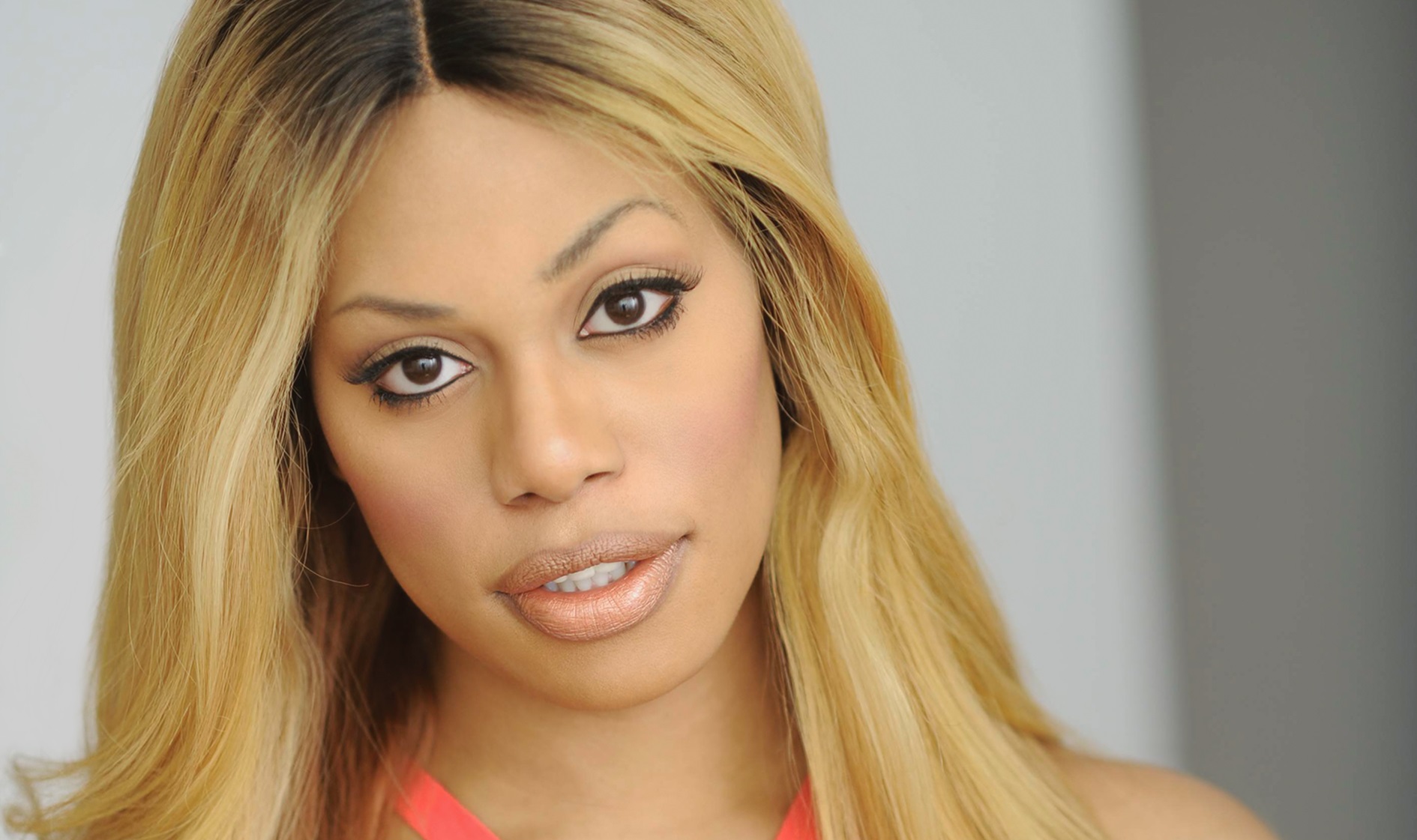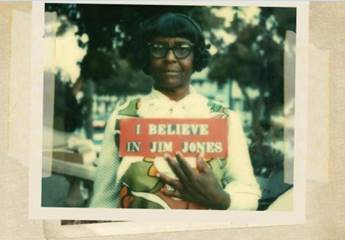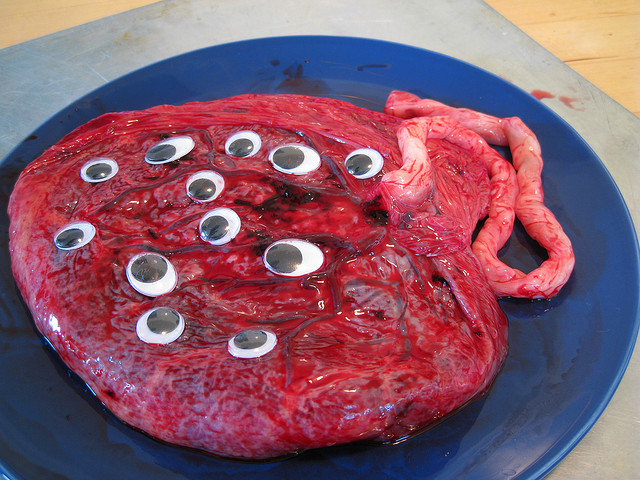(Guest Post) Laverne Cox IS a Woman: Facts are Not Subject to Feelings.

Editor’s Note: Today’s guest post, by Hel F. Kiernan, is what should’ve been published in the Chicago Sun-Times instead of the transphobic and bigoted nastiness that was.
***
The anti-transgender screed, “Laverne Cox Is Not a Woman,” recently published in the National Review (and briefly republished in the Sun-Times before it was pulled due to entirely reasonable public outcry), is strangely subtitled (for a thesis contrary to scientific consensus), “facts are not subject to our feelings.” That maxim being perhaps the only thing I agree on with its author, Kevin D. Williamson, I’m sure he would appreciate a response correcting his article with some actual scientific facts that support respecting the choices of transgender people.
(1) Men & Women are Not a Separate Species. Williamson’s lack of scientific knowledge seems like it could go pretty deep, so I thought I’d start with the basics. Human men & women are not a separate species; if they were, they would be unable to breed offspring that were also capable of reproduction; males and females being mostly technically capable of reproduction is kind of the whole thing that makes animals the same species.
No; men do not truly originate on Mars, and women do not come from Venus (that was a metaphor–a poor one). In fact, women and men both develop from variations on the same biological material. In the womb, the human fetus begins life the same regardless of sex, and doesn’t develop external sex organs until roughly the twelfth week (and every so often, a baby is born intersex, with androgynous genitalia and/or a chromosomal variation that make it not quite fit into our standard categorizations of male and female).
Even IF women and men were a separate species, however, that would not mean they would be vastly different with nothing in common and no possible overlap, because:
(2) All Life on Earth Originated from a Common Ancestor. Again, basics. Even animals that are a separate species from humans have a lot more in common with us than we might assume; we all evolved from the same ancestors (and are even all made of the same material as the stars). So actually, “the phenomenon of the transgendered person” has a history going back beyond humankind itself to the first organism to reproduce asexually. Variance in gender and sex is not unnatural—rather, the assumption that sex and gender must be a strict static binary is an assumption that does not actually match anything in nature.
People arguing against respecting transgender identity often say things like, “if a cat thinks it’s a dog, should you treat it like one?” The answer to me seems so obvious; a cat and a dog may have evolved along very different paths, but they share a common ancestor, and if a cat was born with a very dog-ish personality, yes, I would treat her like a dog if that’s what worked with her. I certainly don’t see any possible harm to it.

(3) Gender & Sex are a Spectrum, not a black-and-white, static, opposite binary but a spectrum, light divided into rainbow shades that mix and bleed into each other. The human brain loves to oversimplify things, but our perceptions are not necessarily reality.
Gender and sex vary not just from species to species, but also within those species, amongst individuals. The evolutionary process is not smooth and perfect—many variations, for better or worse, frequently occur.
Just as humans can be intersex, in some other species (notably certain butterflies and birds) some individuals will be gynandromorphs, precisely half female and half male, literally and physically.
(4) Gender & Sex are Two Different Things. Well, three. I mean, obviously there’s “sex” as in the fun consensual act of sweaty passion. We won’t be talking much about that (sorry), because sexuality is not necessarily tied to gender or biological sex.
An individual transgender person, exactly like any cisgender (or non-trans) person, can be sexually attracted to:
(a) Men
(b) Women
(c) Gender non-conforming people
(d) Some combination of (a), (b), & (c )
(e) None of the above.
So sexual orientation has nothing to do with whether someone is transgender.
More to the point, there is also “sex,” the biological distinction between a female, a male, & an intersex person. This is a designation regarding genitalia and reproductive ability. As infants, we are all assigned a sex based on how closely we appear to be male or female. What determines an individual’s sex is a combination of their chromosomes (XX, XY, or another variation) and primary sex characteristics (development of genitalia); later, during puberty, secondary sex characteristics develop.
Gender is not sex or sexuality. Gender is how an individual’s overall personality conforms—or doesn’t conform—to society’s expectation based on their assigned sex; how masculine, feminine, or androgynous an individual might be. Various scientific studies have shown that some aspects of a person’s gender may be influenced by biology, which explains why environment doesn’t seem fully capable of perfectly shaping every individual’s gender performance (as many case studies of individuals like David Reimer show); some people raised as girls still want to live more like a man when they grow up, and some people raised as boys feel more like women, no matter how society may threaten them for crossing gender lines.
(5) Gender and Sex Vary a lot across animal and plant species; some species have more than two sexes, some have only one, and many species are able to transform from one sex (or gender) to another. Hyena females dominate males and have external genitals resembling a male member to prevent unwanted intercourse. Some species of clownfish begin life male until the most dominant member of the school transforms into a female. Less dominant male cuttlefish trick more dominant males into mating with them by changing their apperance to seem female as part of an elaborate way to get females to mate with them as well as the more dominant males.
Asexual reproduction was the original, OG form of reproduction—the whole hetersexual thing is a newer invention. So when evolution started producing sexes via mutation, the materials for both sexes had to come from the same place—that’s why the Y chromosome in human males is essentially a shortened X chromosome. Evolution, by its nature, is never perfectly uniform, and if it were, humans—the products of billions of years of variation and mutation—would not even exist. Diversity is not only a scientific fact, it’s also the key to the survival of all living things.

(6) Gender Standards Vary by Society. Gender, too, is not only a range in itself, but how societies view and distinguish gender changes geographically and over time. You may recall that the Founding Fathers of the U.S. wore high heels, wigs, & make-up; in fact, high heels were once only for men. If you read classic literature, you may notice that men are often portrayed as crying openly when distressed, something our current society generally discourages. In some societies, women were expected to perform all the farming or the household math. History is full of examples of the fluidity of gender roles—for the most part it depends on what is useful to a society at the time, at least to their perception. In fact, many societies even lacked the modern phenomenon of transphobia:
(7) Transgender People Have Always Existed. In 2011, a 5,000 year old male skeleton was uncovered in Prague that had been buried in the manner traditionally observed to be designated to females. This means that not only did this male-bodied person probably identify as a woman, but her friends and/or family fully accepted and honored that choice. So transgender acceptance is probably at least 5,000 years old. There is plenty of further evidence of trans-positive societies, notably many Native American tribes who sometimes even had reverence for transgender people as having a special spiritual role in the tribe.
Given all this basic scientific and historical information, it shouldn’t come as a surprise that:
(8) The Scientific Community Supports Respect & Equality for Transgender People. The American Psychiatric Association, which is the largest U.S. organization of scientists and doctors who study the human brain, does not consider being transgender to necessarily be a mental disorder; they consider it a normal healthy part of a the human experience, and they advise others to support trans rights; among their advice: “Use names and pronouns that are appropriate to the person’s gender presentation and identity; if in doubt, ask.”
(9) Even if Being a Transgender Person Were Not Natural, That Wouldn’t Make It a Bad Thing. “Natural” and “unnatural” are somewhat arbitrary distinctions humans draw between things that humans (a type of animal) create (using materials found in our environment) and everything else in the universe that we haven’t directly messed with recently. For some reason, people like to imply that anything our species creates from our environment (such as hearing aids, medicine, and electric guitars) is evil, and anything unaltered by humans (such as cyanide, lions, and hurricanes) is good.
And really, even if we didn’t have plenty of science on the side of respecting transgender people, is it so hard to have some feelings of empathy for them, to treat people the way they would like to be treated, considering it doesn’t actually cause anyone any harm to just let others be happy being themselves?
In a world where transgender women are too often the victims of legally sanctioned violence and abuse (yesin the U.S. too), coming out as transgender is an exceedingly brave act, and it shouldn’t have to be. So if you find yourself wanting to post a screed questioning whether it’s OK for people to disrespect transgender people just because they are transgender people, please do yourself and the rest of us a favor and start with some basic research and human decency.
***
Hel F. Kiernan is a gender non-conforming human freelance writer working in Chicago & the internet.





Thanks for writing this Hel. I agree with most of what you’ve written here, but I also have some (perhaps nitpicky) issues with some of it.
The first issue I have is that the super problematic analogy you engage with at the end of point #2 is in direct contradiction to point #1. Talking about transgender identity in an analogy of species transition (cat –> dog) plays right into the metaphor of men/women as different species. Also, it buys into the idea that a person who transitions only *thinks* they are a different gender than the one assigned to them, but that really they are still “a cat.” I think even engaging with that analogy is the wrong way to go and, instead, we should point out how the analogy is flawed and not comparable to a trans* person’s experience.
On point #4, I think we need to begin moving away from the paradigm of thinking about sex and gender as two different, discrete things toward viewing sex/gender as always already deeply entangled for humans. To say that “sexuality is not necessarily tied to gender or biological sex” is, in my view, flawed. If sexuality is not necessarily tied to gender, why are all the referent subjects of desire you provided gender-based? In other words, when we say someone is “homosexual,” we are not referring to how they are attracted to people with the same skin color, eye color, height, age, and so on, but that they are attracted to someone of the same sex/gender.
In the last paragraph of point #4, you start to get at how sex/gender are not so separate after all, but you only give an example of how gender may be influenced by biology. I think it’s important to point out that sociocultural gender beliefs and practices also influence biology (see, for example, Anne Fausto-Sterling). In humans, it is nigh impossible to separate biology and culture.
To point #7, I am always super hesitant to apply identity category terminology (e.g., transgender, homosexual/gay, etc.) pan-historically and pan-culturally, particularly when it comes to interpreting (bio)archaeological artifacts. That an apparently male-bodied person (we could get into the problematics of sexing skeletons, but I’ll leave that for now) was buried in a manner traditionally observed to be a feminine mode of burial does not necessarily mean that person identified as a woman, nor that that person was “gay” as the article you link to also suggests. That actually reinforces the gender binary and disallows the possibility of a non-binary gender system. That person could have been male-bodied and been neither man nor woman but an entirely different gender all together. This interpretation also makes a lot of assumptions about the intentions of the burial. Let’s say, for example, that perhaps the beliefs that particular society had about the afterlife said that if you are a male-bodied person and you are buried like a female, you are prevented from going to the afterlife. In other words, maybe the burial was not supportive at all, but was rather an insult. That’s something we should consider if, as the researchers say, the people in that society took burials very seriously. My point is that there are so many other possibilities, all equally plausible given the nature of the archaeological record (which is super difficult, if not impossible, to read intentionality from), and it gives me great pause when people start attaching our own society’s beliefs and hopes about gender and gender diversity to other societies, particularly past societies.
There’s been a lot written on the problematics of retroactively applying identity category terminology, not the least of which is that it can have the effect of misrepresenting or even erasing the experiences of the people in those societies. And that’s something I think we should strive to avoid.
Hi Will –
Thanks for reading & for your very interesting & insightful comment. I will have to really think about what you said before I can even know how to respond more specifically to your points, but I am really glad that you said it & it’s always good to hear constructive criticism (however nitpicky) & different ideas, particularly when conveyed in a pleasant manner. All I can say is that I would never represent myself as an expert & I certainly acknowledge that both the science or the social understanding of Transgender & related issues is still very debatable in many ways & there is still much to learn for me personally & for humans in general – so it’s good to keep the conversation going!
I could not agree more! =)
In regards to point 7: http://en.wikipedia.org/wiki/Elagobalus
(Warning: I’m in a bit of a ranty mood.)
I don’t understand putting energy into justifying or proving to people like this the existence of trans people, or the efficacy of transition for many (most?) of them. They know very well trans people exist — they know who Laverne Cox and Chelsea Manning are. What it is is that they don’t _want_ them to exist, and any “arguments” they put forth are simply rationalizations. They have a nice neat (and simple-minded) schema of How Things Are that makes them content (and incidentally justifies their oppression of others), and trans people, like gay people, by their very existence disprove that simple-minded schema. Their solution is not to modify or throw away the schema, but to throw away the counter-examples, on the principle that if the world doesn’t fit their preconceptions, it’s the world that has to change. In the old days, their bully-boys would beat the counter-examples half (or more) to death, or put them in jail or mental hospitals, or otherwise remove them from sight, and it’s a sign of the Depravity Of The Modern World that counter-examples get to parade around as if they were human! (Cue pearl-clutching.) So, IMHO, articles like this are kind of beside the point.
Ultimately, what does it matter whether someone is trans because of genes, because of hormones during gestation, or because they ate too many Wheaties on their sixth birthday? Whatever the cause, it’s a fact that there are a lot of people who feel sufficiently distressed with the body and/or their (gender) role they got at birth to go through considerable pain and expense to change it, not to mention having to expose themselves to a world full of haters like Mr. Williamson. It’s a fact that transition relieves their distress, and practically nothing else is very effective at doing so. (I’m simplifying things a lot, I know — e.g., I’ve left out non-binary folks.) And, IMHO, trans people shouldn’t have to justify being and accepting and being accepted for who they are on the basis of whether it’s “natural” or “genetic” or whatever. Being human is justification enough.
As for whether Laverne Cox is a woman: if Mr. Williamson wants to debate that, I’m prepared to debate whether Mr. Williamson is human (we’ll use _my_ definitions, thank you!)
Me, I learned by the time I was six that it was simple courtesy and consideration to call people by the names and roles they preferred to be called by. As far as I’m concerned, if she says she’s a woman, who am I to say she’s not? Likewise, who is Mr. Williamson, who AFAIK has never even met Ms. Cox, to say she’s not?
“IMHO, articles like this are kind of beside the point.” I appreciate your frustration, but I’m afraid you’ve missed the point. I think we all know that articles like this are unlikely to win over people with rigidly regressive views on gender and sexuality. That is not the purpose of writing them.
The purpose of writing articles like this is to not abandon the arena of public discourse to those who put forth messages of hatred and ignorance. When voices like Williamson’s are the only ones heard, it has three effects. First, for gender and sexuality minorities, it confirms that this is the way our society feels about them. The fear, isolation, and stress this contributes to is obvious. Second, for hateful bullies who are looking for a target, it sends a clear message that gender and sexual minorities are undefended, and that they are therefore easy targets of violence. Third, even for unhateful cisgendered, heterosexual people who have been raised in the dominant cultural narratives about gender and sexuality, it permits, and to some extent even forces, them to continue with their enculturated beliefs unquestioned. There are plenty of such people out there who have never really put much thought into the nature of gender, or what it would mean to be trans or non-binary or what have you, and who if asked whether people should be permitted to self-identify their own gender, would probably say no out of simple ignorance. Yet when confronted with their underlying misconceptions, and shown the truth about what the lives of people like Laverne Cox are like, many people will engage their reason and empathy and change their views. I know this is possible, because I am one such person, and I am supremely grateful to those who educated me, primarily by online articles like this one.
If speech like Williamson’s is allowed to go unchallenged, if we abandon the arena of public discourse to hatred and ignorance, we are failing both the people who hear their identities casually erased by bigots and the people whom we have denied an opportunity to learn and grow beyond the limitations of their upbringing.
I understand your frustration, but I feel your criticism is mis-aimed. The proper response to hate speech is not silence, it is more and better speech.
I definitely agree that it’s important “to not abandon the arena of public discourse to those who put forth messages of hatred and ignorance.”
I guess my concern is that by focussing on how the haters’ straw-points are wrong, we ignore the unspoken assumption that trans people’s right to exist and to be accepted depends upon whether these straw-points are true. Trans people’s right to exist, to be accepted for who they are (and to accept themselves for who they are!), and to transition as necessary, has nothing to do with whether trans-ness is “natural” (by any standard), whether human or non-human biological sex is rigidly binary or not, whether there were trans people 100 or 1000 or 10,000 years ago, or any of the other excuses transphobes trump up.
As for whether Ms. Cox is “really” a woman, IMHO, this should be explicitly dismissed as definition-gerrymandering. I mean, there are people who argue that women who don’t shave their legs aren’t “real women.” Invoke the “duck test”: she looks like a woman, she lives as a woman, etc., so as far as I’m concerned, she’s a woman.
Ultimately, the best counter-argument is trans people themselves, as you point out. The more the general population sees trans people out there and sees with their own eyes that trans people are people like anyone else (well, in Laverne Cox’s case, maybe I’d have to say “like any other TV star” :-) ) and that the world doesn’t really have to change all that much to accommodate them, the less seriously they will take arguments like Mr. Williamson’s. That’s how gay and lesbian people went in my lifetime from being seen as inherently dangerous degenerates to being generally seen as more or less normal people.
I agree that even if being gender-nonconforming were not natural it would still be a great choice to make, which I state in the article.
The problem I always have with these articles is that we end up making a huge deal of pointing out that something does not actually matter.
Gender is a social construct at least as much as a biological one. Until the industrial revolution survival was a daily struggle for virtually everyone except the 0.1% who tended to find their own ways of making survival a struggle. In a situation where the survival of the community depends on a particular rate of child bearing, many individuals don’t get a choice. So in the medieval period large numbers of upper class men and women were forced into celibacy to avoid diluting the wealth.
We don’t live on the brink any more but a lot of the gender distinctions that continue today are rooted in the needs of medieval society. We left the stocks and hang drawing and quartering behind. We can leave this as well.
That’s quite a claim. Got any evidence to cite for that? It seems premised on the idea that culture does not change very much, but we know that’s not true. American gender norms have changed a whole hell of a lot just in the last 20-30 years. What makes you think gender norms are so stable that they’re based in the “needs of medieval society”?? The premise of your comment sounds more like a just-so story than actual history.
Yes, I was thinking much the same as Will. If you had based your argument on the 19ith century you might have had a better case for relevance. The upper and lower classes were always at it like rabbits and only the bourgeoisie had pretentions otherwise. None of which has much to do directly with gender constructs – or at least you would need to show how and why..
I wish spreading information like this weren’t necessary, but Gender Non-Conforming people, particularly transgender women, still face serious threats of violence just for who they are, so many people still need to be educated about gender.
Yep, I agree. I’m getting pretty tired of these kinds of responses, too. One hallmark of privilege is pointing to issues like this and saying things like “it really doesn’t matter.” That’s an easy thing to say when you aren’t directly affected by it.